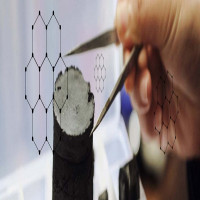Detection of Pesticide Residues in Food

Strong 8k brings an ultra-HD IPTV experience to your living room and your pocket.
Pesticide residues in agricultural products are mainly caused by direct pollution and environmental absorption after the pesticide is applied, which may result in acute or chronic toxicity to humans. Therefore, monitoring pesticide residues is critical to ensure that pesticide intake goes within acceptable limits.
At present, there are many kinds of pesticide residue detection methods, which can be generally divided into two types: conventional detection and rapid detection. Routine testing is mainly represented by gas chromatography, high performance liquid chromatography, gas/liquid chromatography-mass spectrometry, and capillary electrophoresis. The results of the conventional detection method are relatively reliable, highlighted by excellent sensitivity and accuracy, but the sample preparation appears cumbersome. It’s costly and time-consuming, and a special technician is required. Rapid detection methods include enzyme inhibition, immunology (radioimmunolabeling, magnetic immunoassay, fluorescent immunoassay, chemiluminescence immunoassay, enzyme immunolabeling, and colloidal gold immunoassay), and spectroscopy (ultraviolet, fluorescence, visible/near infrared spectroscopy, infrared spectroscopy, and Raman spectroscopy).The rapid detection method has the advantages of high sensitivity, simple operation, rapid response, and low requirements on samples, and has gradually replaced traditional detection methods widely used in pesticide detection.
Gas-phase Long-path Infrared Spectroscopy Analysis
As a non-destructive testing technology, gas-phase long-path infrared spectroscopy has the advantages of convenience, speed, low costs, non-destructive, and non-polluting, etc. It has been successfully used for qualitative and quantitative detection of the quality and safety of agricultural products such as fruits and vegetables.
Detection of Pesticide Residues in Food
Simple infrared spectrum schematic2
Xiao G et al. used apples as the research object to detect the pesticide inside via the gas-phase long-path infrared spectroscopy method. In this method, the detection of pesticide can be directly implemented, entailing no sample processing. From the experiment, two obvious spectral characteristics from chlorpyrifos, 990-2830 and 1259-1227 cm?1, have been observed immediately. By analyzing the infrared spectra of the volatiles released from chlorpyrifos with different dilution ratios on the apple peels, we found the spectral intensities increased with the chlorpyrifos concentrations. When the results were further analyzed using chemometrics, it is demonstrated that there are obvious spectral differences among the apples sprayed with 1:20, 1:100, and 1:1000 chlorpyrifos and clean apples. This study demonstrated this method is an effective method for detecting the pesticide residues on fruit peels, with the advantages of no sample treatment and fast.
Vis/NIR Analysis
Vis / NIR is also a qualitative and quantitative non-destructive testing technology successfully used for testing the quality and safety of agricultural products. Jamshidi et al. used Vis/NIR spectroscopy to establish pesticide detection models. He collected spectra ranging from 450 to 1000 nm for cucumber samples (These cucumber samples do not require complex pretreatment, which can save test time and costs) containing different concentrations of diazinon pesticides. Based on different spectral pretreatment techniques, a least squares-discriminant analysis model was established to distinguish the different concentrations of pesticides quickly and easily.
SPR Analysis
Surface plasmon resonance biosensors have not been labeled and have been widely used in the interaction analysis of antigens and antibodies. Thus far, they have become a research hotspot in academic and business circles for the detection of pesticide residues.
Lee et al. used the smart phone, plastic lens, LED light sources and narrow-band filters to make the SPR sensing system, immobilized the imidacloprid bovine serum albumin on the surface of the nano-plasma chip, combined indirect competitive immunoassay to qualitatively detect the imidacloprid pesticide.
QCM Analysis
Quartz crystal microbalance(QCM) is a very sensitive mass detector. It utilizes the piezoelectric effect of quartz crystal to convert the surface quality change of quartz crystal electrode into the frequency change of the output electric signal of the quartz crystal oscillator circuit. The QCM sensor has good cost-effectiveness, flexibility, and reliability, which has received an increasing interest in recent years. Bi and Yang detected pesticides in the aqueous environment using a QCM based method. They used molecular imprinted monolayers (MIMs), obtained from hexadecanethiol self-assembling on the QCM gold electrode, to detect imidacloprid and thiacloprid in celery juice reaching a LOD of 1 μM by using an extremely sensitive QCM apparatus with a resolution of 0.1 Hz. The result proved the good application of immunobiosensors in pesticide detection.
References
Jamshidi Bahareh, Mohajerani Ezeddin, Jamshidi Jamshid.(2016) ‘Developing a Vis/NIR spectroscopic system for fast and non-destructive pesticide residue monitoring in agricultural product’, Measurement, 89: 1-6.
Xiao G, Dong D, Liao T, et al. (2014) ‘Detection of Pesticide (Chlorpyrifos) Residues on Fruit Peels Through Spectra of Volatiles by FTIR’. Food Analytical Methods, 8(5):1341-1346.
Lee Kuang-Li, You Meng-Lin, Tsai Chia-Hsin, et al. (2016) ‘Nanoplasmonic biochips for rapid label-free detection of imidacloprid pesticides with a smartphone’. Biosensors and Bioelectronics, 75: 88-95.
Funari Riccardo, Della Ventura Bartolomeo, Schiavo Luigi, et al. (2013) ‘Detection of parathion pesticide by quartz crystal microbalance Functionalized with UV-Activated antibodies’. Analytical Chemistry, 85(13): 6392-6397.
Note: IndiBlogHub features both user-submitted and editorial content. We do not verify third-party contributions. Read our Disclaimer and Privacy Policyfor details.


